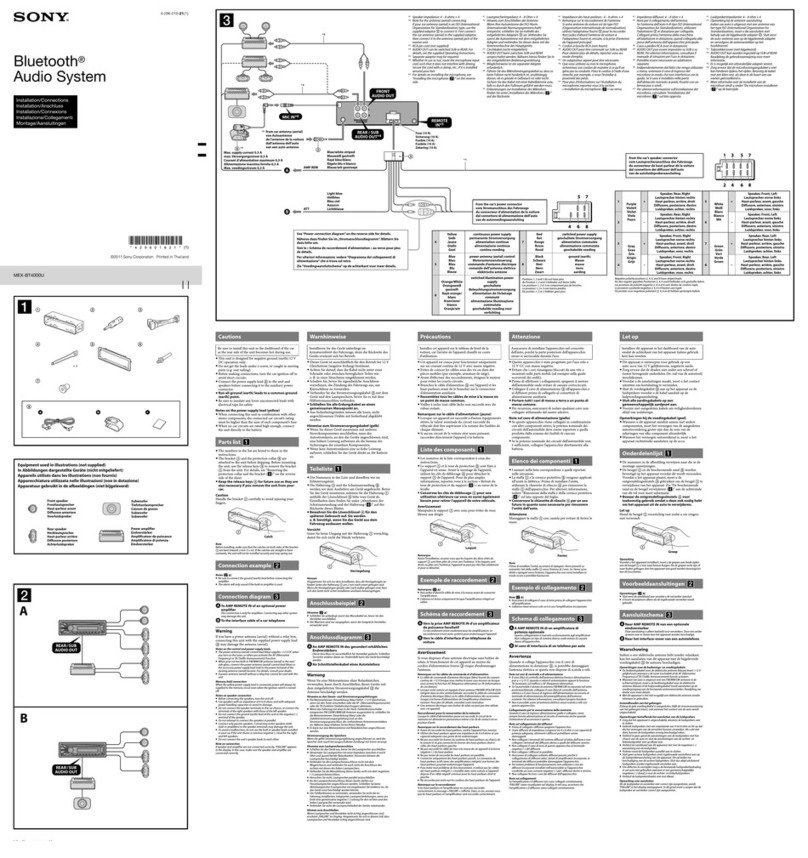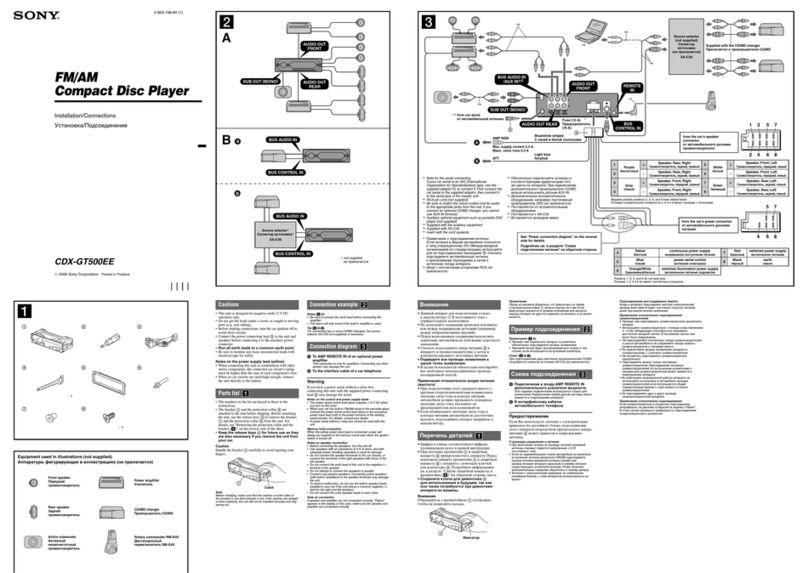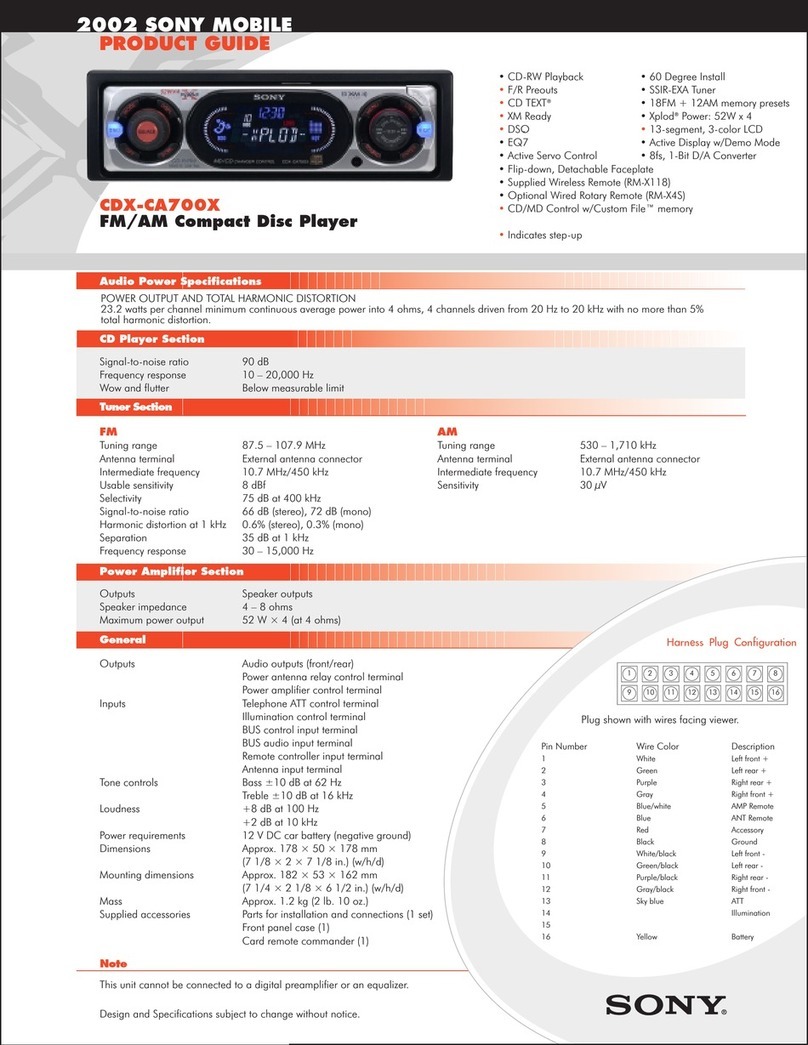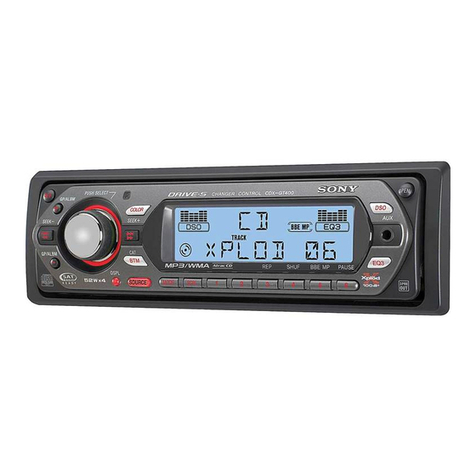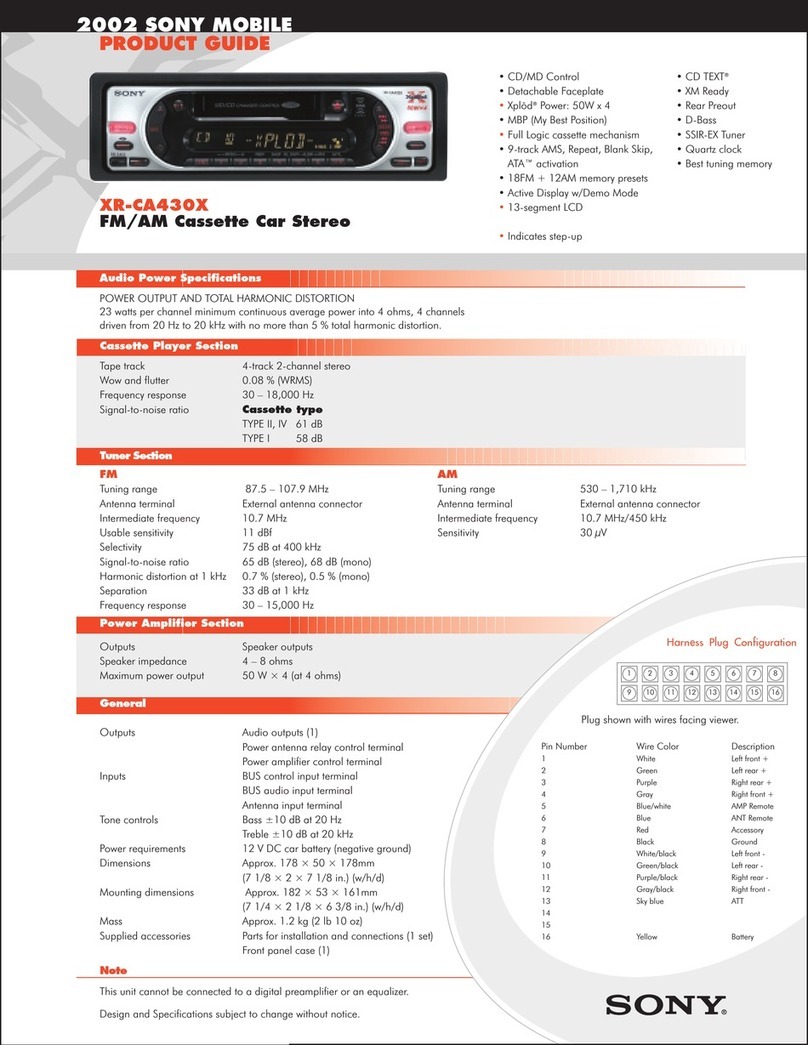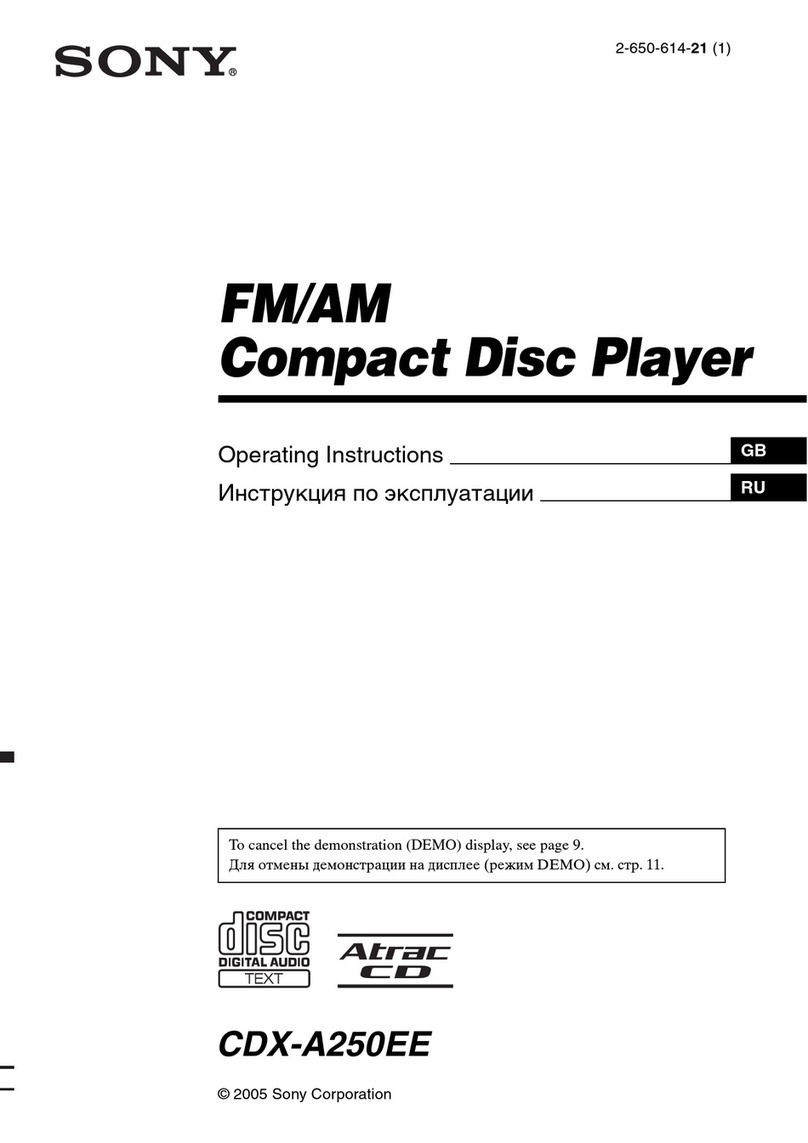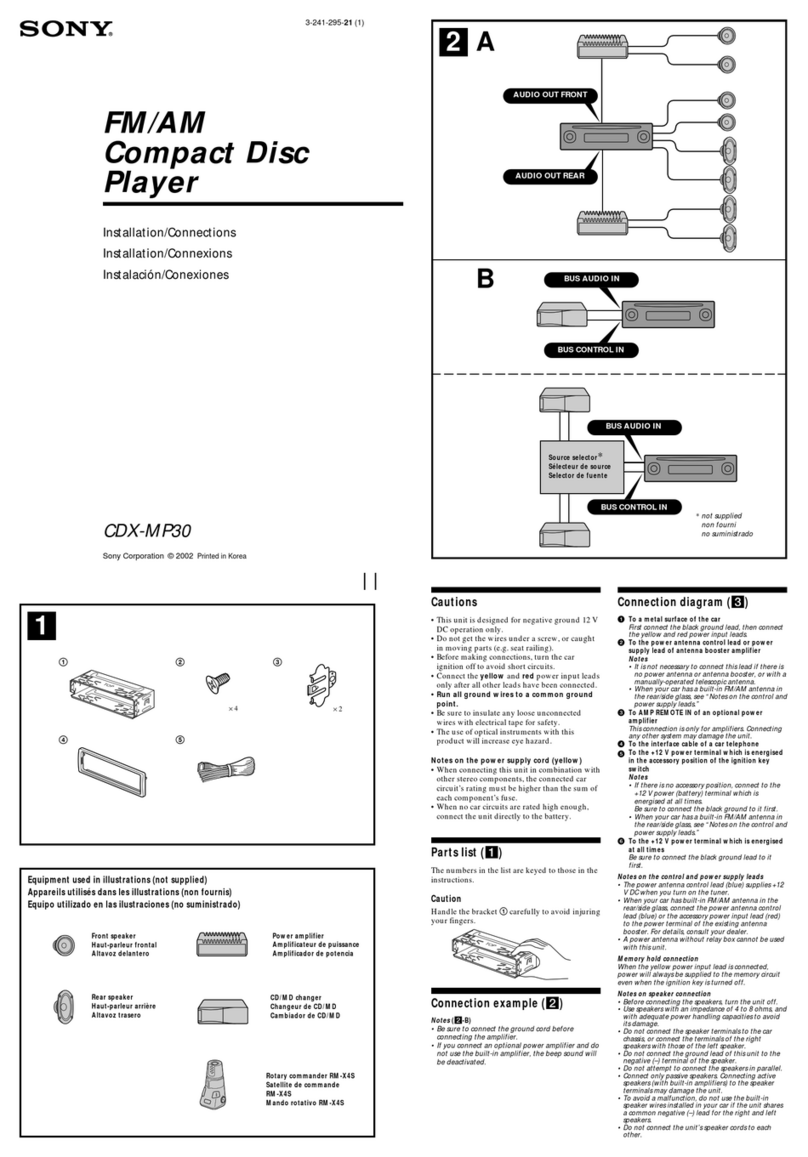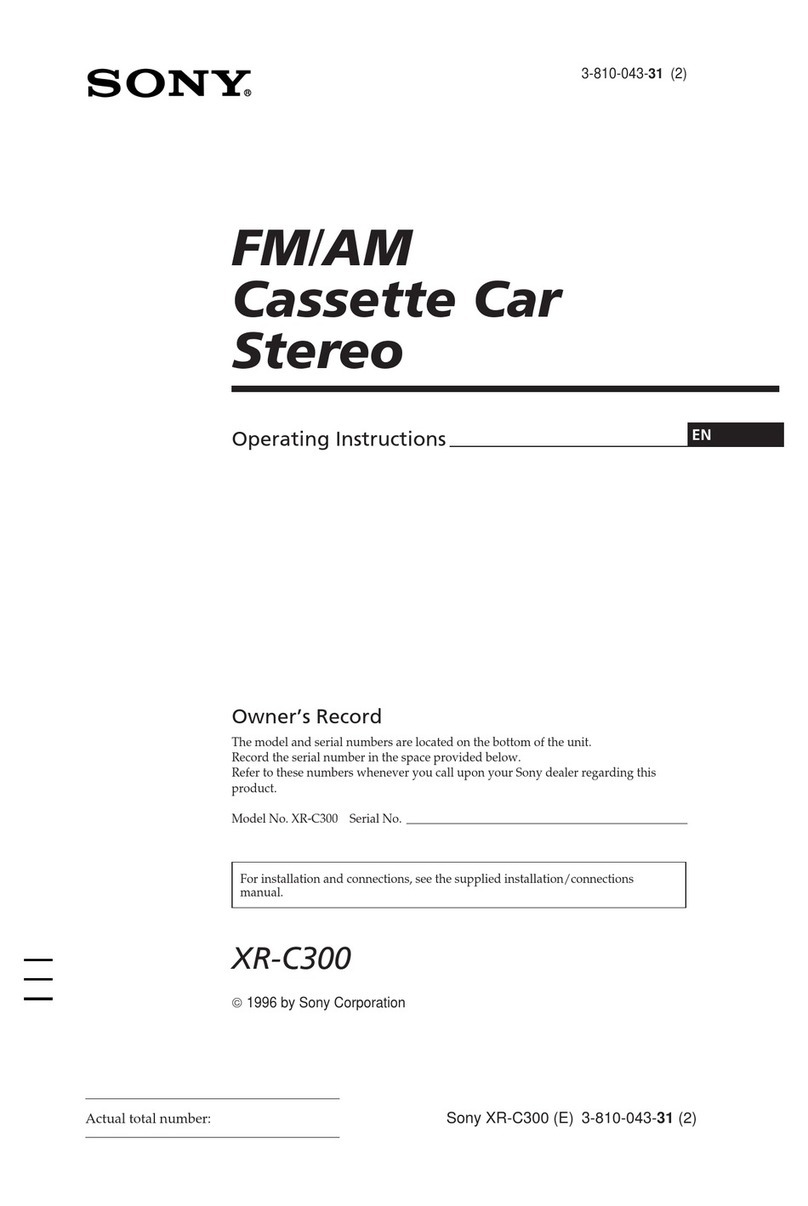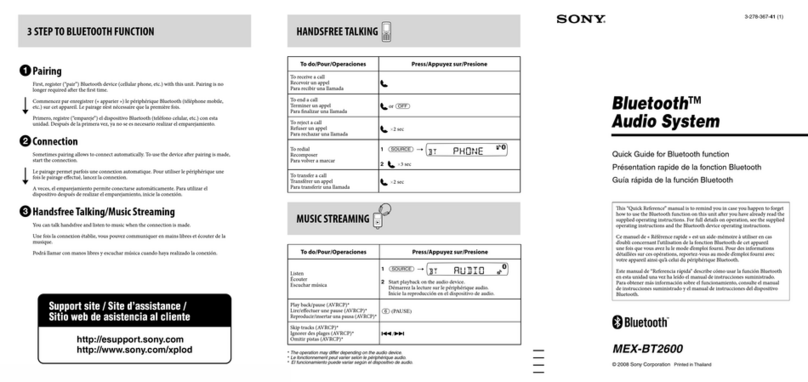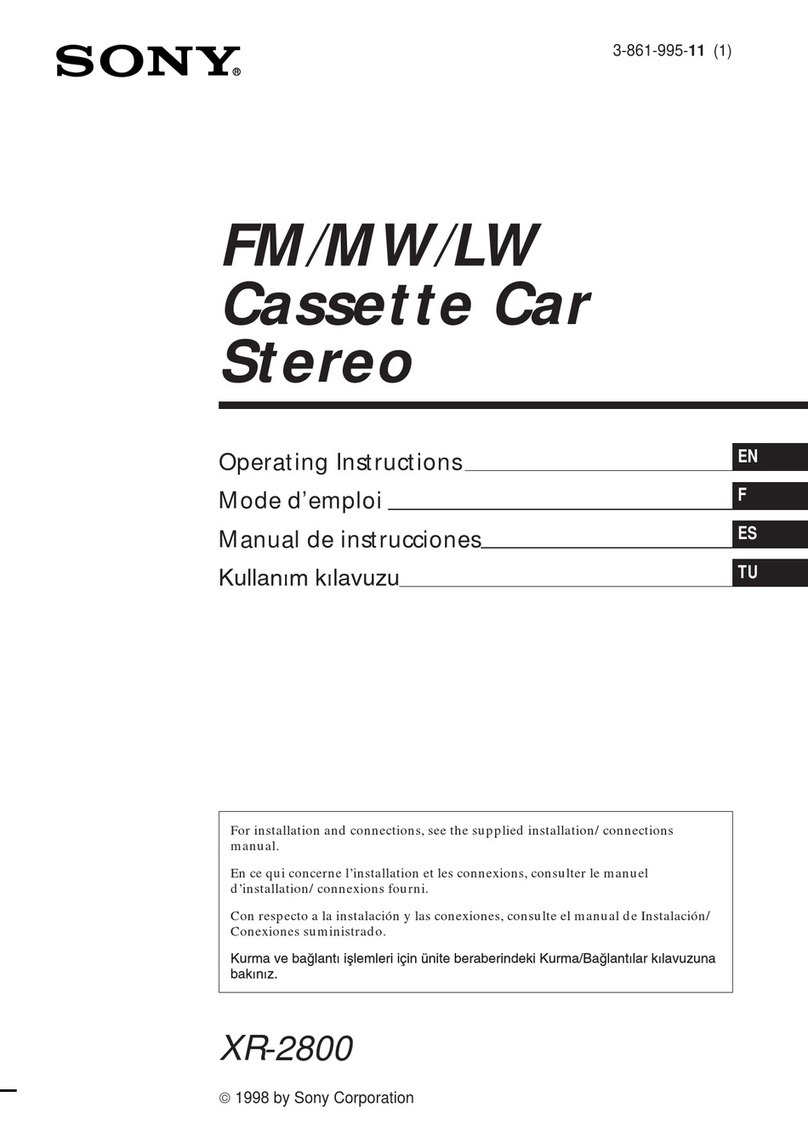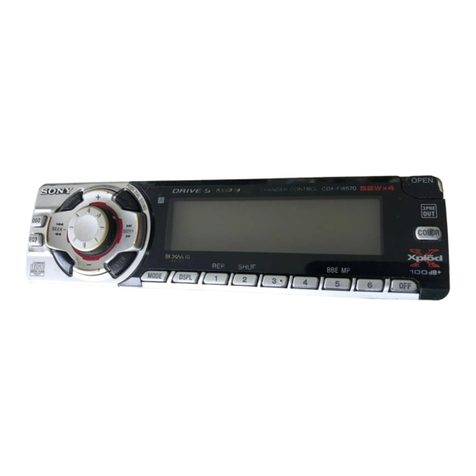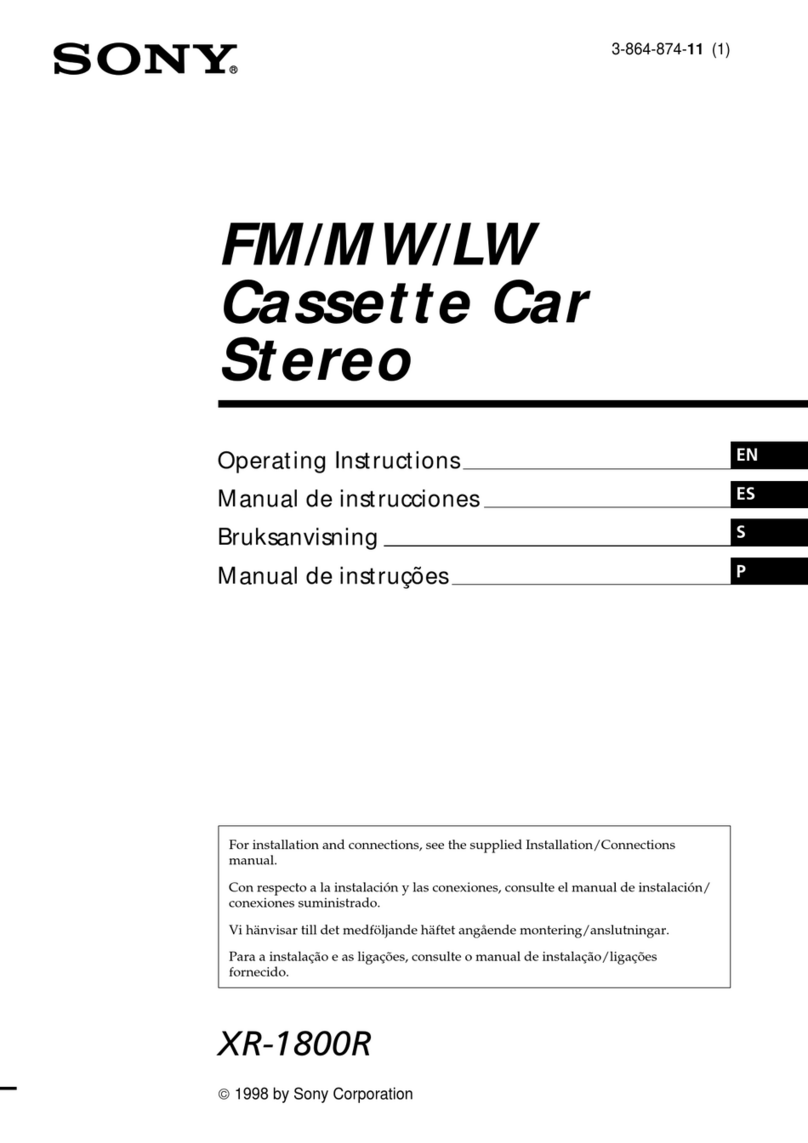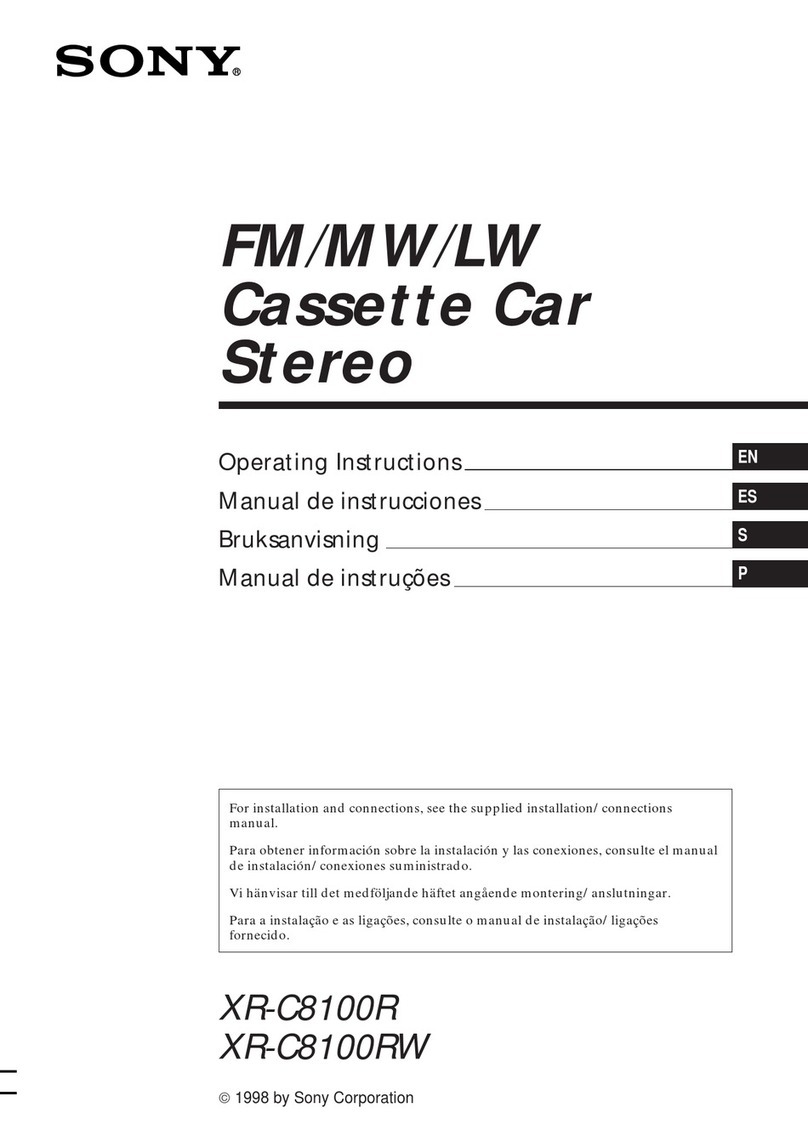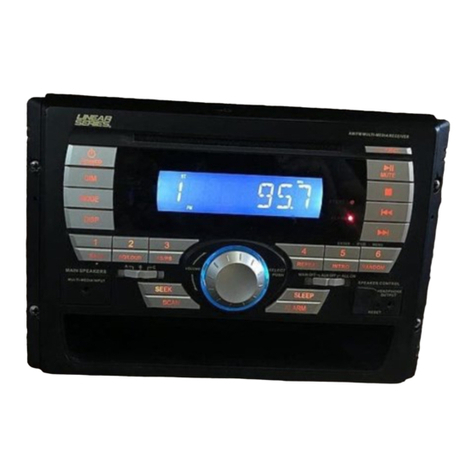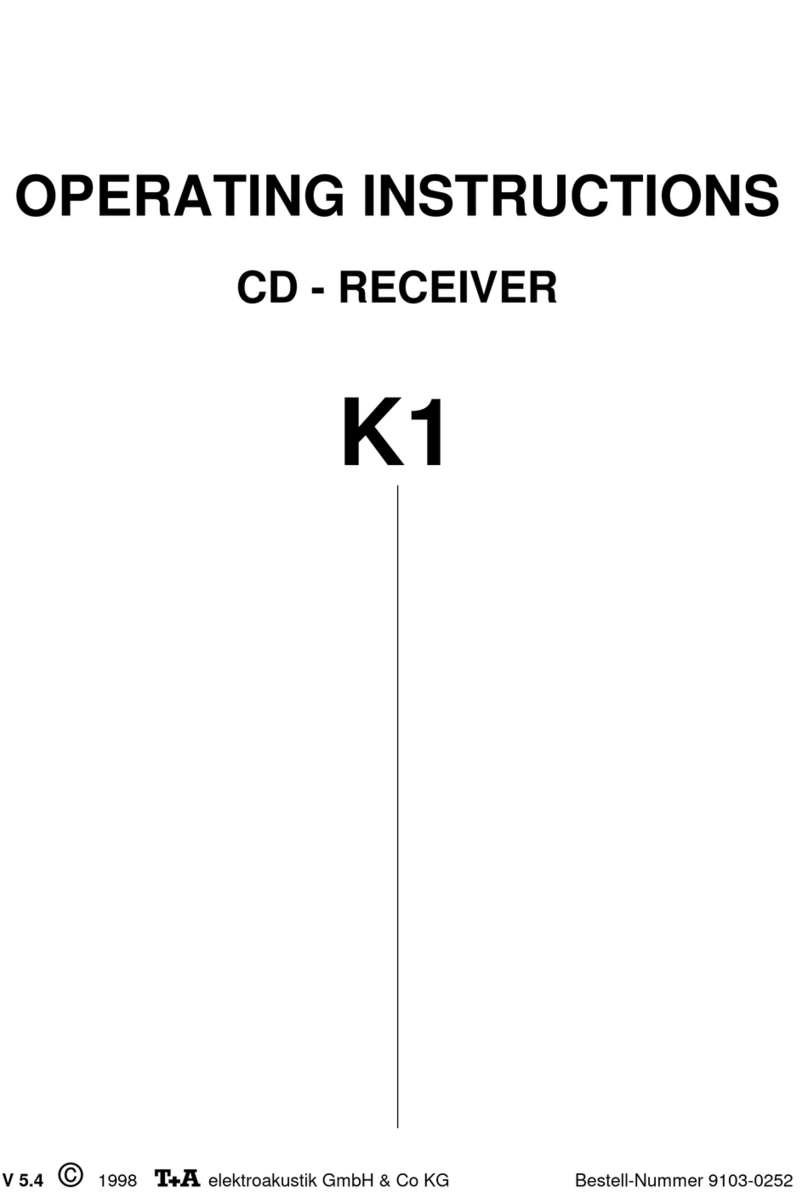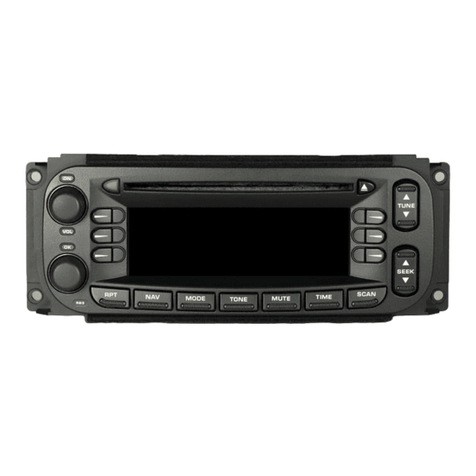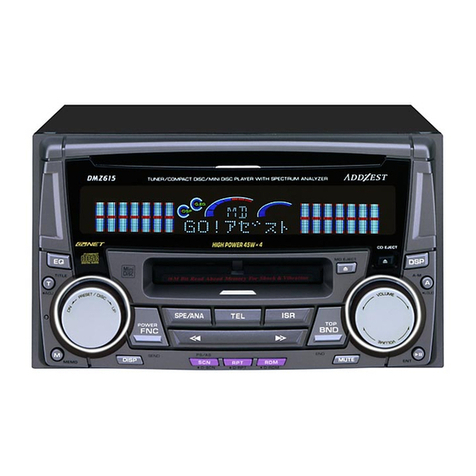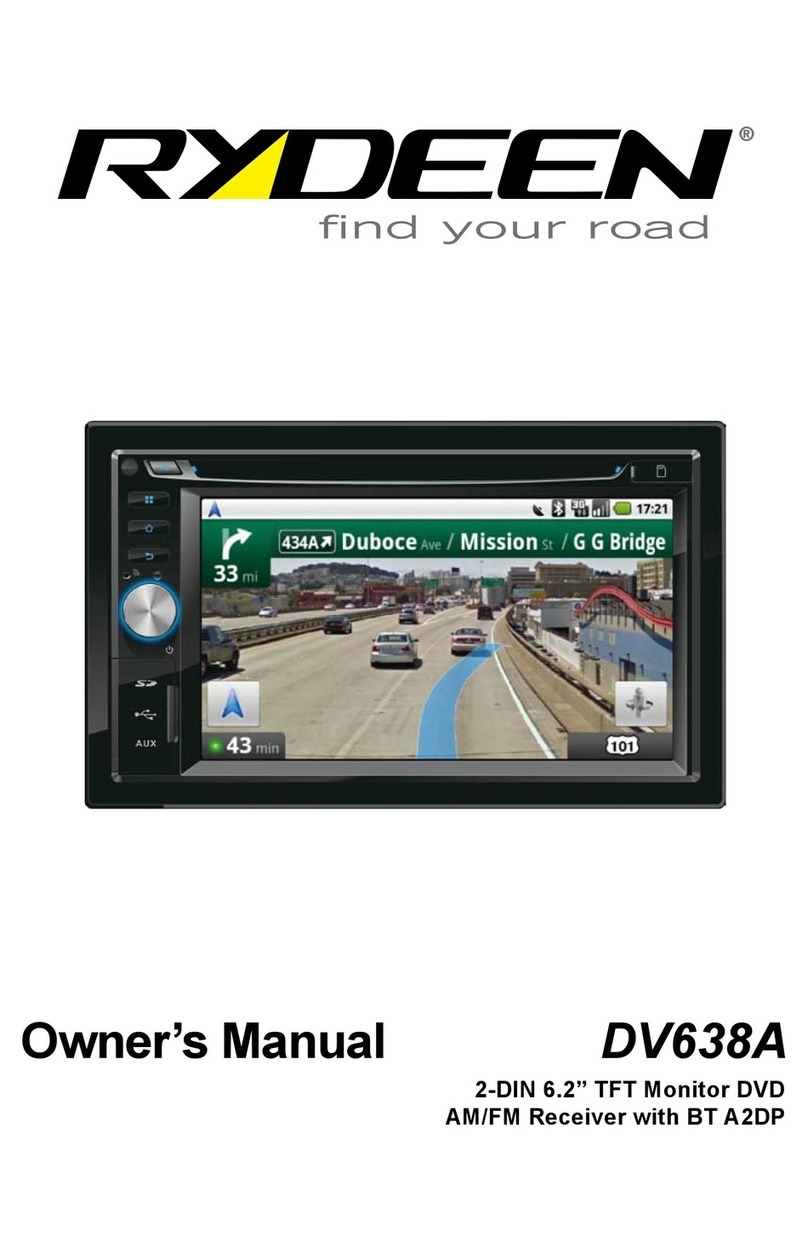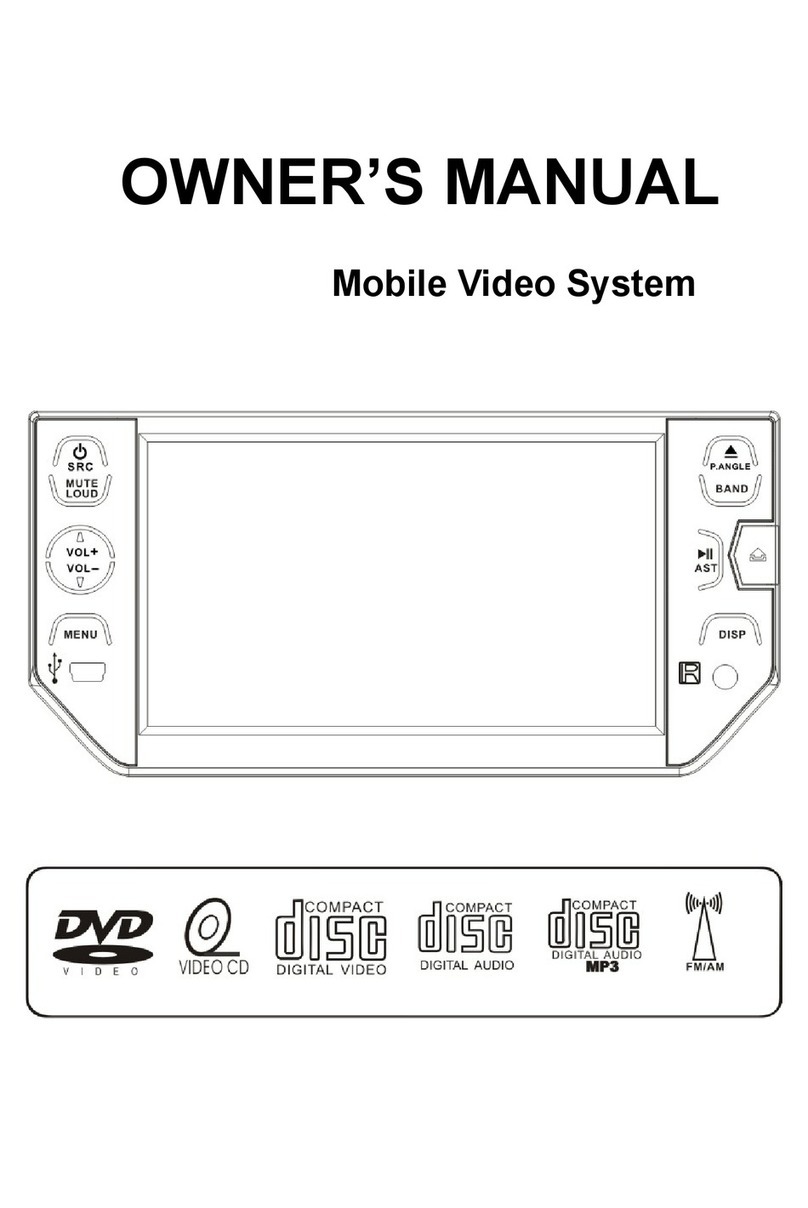– 2 –
TABLE OF CONTENTS
1. GENERAL
Location of Controls ........................................................ 3
Installation ....................................................................... 4
Connections ..................................................................... 5
2. DISASSEMBLY.......................................................... 8
3. ASSEMBLY OF MECHANISM DECK ........... 11
4. MECHANICAL ADJUSTMENTS ....................... 17
5. ELECTRICAL ADJUSTMENTS
Test Mode ........................................................................ 17
Tape Deck Section ........................................................... 18
Tuner Section................................................................... 18
6. DIAGRAMS
6-1. IC Pin Function Description ............................................ 22
6-2. Printed Wiring Boards – MAIN Section – ..................... 25
6-3. Schematic Diagram – MAIN Section –........................... 29
6-4. Printed Wiring Board – POWER Section – .................... 34
6-5. Schematic Diagram – POWER Section –........................ 37
6-6. Printed Wiring Board – CONTROL Section – ............... 41
6-7. Schematic Diagram – CONTROL Section –................... 43
7. EXPLODED VIEWS ................................................ 47
8. ELECTRICAL PARTS LIST................................ 51
SERVICING NOTES
Flexible Circuit Board Repairing
•Keep the temperature of the soldering iron around 270 ˚C dur-
ing repairing.
•Do not touch the soldering iron on the same conductor of the
circuit board (within 3 times).
•Be careful not to apply force on the conductor when soldering
or unsoldering
Notes on chip component replacement
•Never reuse a disconnected chip component.
•Notice that the minus side of a tantalum capacitor may be dam-
aged by heat.
CAUTION
Danger of explosion if battery is incorrectly replaced.
Replace only with the same or equivalent type recommended by
the manufacturer.
Discard used batteries according to the manufacturer’s instructions.
ADVARSEL!
Lithiumbatteri-Eksplosionsfare ved fejlagtig håndtering.
Udskiftning må kun ske med batteri
af samme fabrikat og type.
Levér det brugte batteri tilbage til leverandøren.
ADVARSEL
Eksplosjonsfare ved feilaktig skifte av batteri.
Benytt samme batteritype eller en tilsvarende type
anbefalt av apparatfabrikanten.
Brukte batterier kasseres i henhold til fabrikantens
instruksjoner.
VARNING
Explosionsfara vid felaktigt batteribyte.
Använd samma batterityp eller en likvärdig typ som
rekommenderas av apparattillverkaren.
Kassera använt batteri enligt gällande föreskrifter.
VAROITUS
Paristo voi räjähtää, jos se on virheellisesti asennettu.
Vaihda paristo ainoastaan laitevalmistajan suosittelemaan tyyppiin.
Hävitä käytetty paristo valmistajan ohjeiden mukaisesti.

